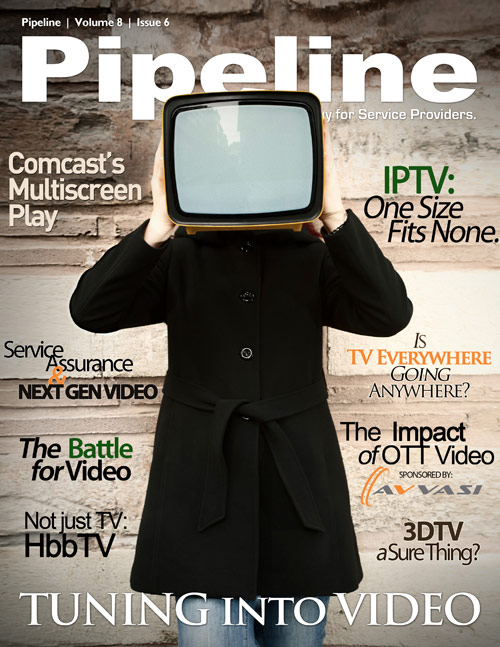Quality
Consumers, especially digital natives, expect a high level of service quality that extends across multiple devices. Ira Gorelick, Verizon, commented at 4G World 2011 that these future end users want mobile video, for instance, “to look like their desktop experience.” As a result, ensuring a high-quality video experience is a crucial part of the puzzle for everyone involved with video, but some service providers are better equipped than others to deliver and monitor quality. Whereas an OTT like Netflix must adapt the bit rate resolution of a video stream in response to dips in bandwidth, carriers (provided they have the tools in place to differentiate packet data by service type) are uniquely positioned to actively distribute capacity in response to video stream degradation.
Presumably, this is why FiOS and U-Verse have made such strong strides. In part, by effectively leveraging network intelligence, telco video offerings from both Verizon and AT&T ranked ahead of cablecos in the J.D. Power and Associates 2011 U.S. Residential Television Service Satisfaction Study. In fact, AT&T U-Verse has ranked the highest for overall satisfaction in the Western and Southern regions of the US for four consecutive years.
In terms of multi-screen quality, every player we're covering in this article knows how to transcode video for multiple screen sizes, select the nearest video server, and monitor network quality on a general level, but thats doesn't tell the whole story. A provider can get all of these things right, and yet the Quality-of-Experience (QoE) can still suffer. Ultimately, to fine tune the quality metric, providers must have real-time visibility along the entire signal pathway, from the content delivery network right to the screen. It's not enough to know packet loss and jitter data. To compete on quality, and reduce churn, a provider must optimize the video experience for the end user, across multiple devices.


Delivery
Video delivery has grown far past the television, and now, new data from Sandvine says it's grown past the PC as well (Sandvine Report). For digital natives, video is anywhere and everywhere, and providers must have a strategy in place to deliver the multi-screen experience, or risk becoming a VHS-like video relic.
Jim Benz, VP Business Development, Content Direct, CSG International, sees multi-screen video delivery platforms as crucial to competitiveness. “It’s pretty clear now in the pay TV and online video markets that TV Everywhere offerings are table stakes,” says Benz. “If you aren’t allowing customers to extend their subscriptions out of the set-top and onto mobile devices and connected TVs, it’s going to be tough to compete.”
In terms of delivery innovation, Netflix (NASDAQ: NFLX) is far ahead of the pack. The company not only delivers video to PCs, connected TVs, and Android and iOS devices, but also extends the Netflix viewing experience to game consoles, Windows 7 devices, Facebook, and various set-top boxes. The sheer number of outlets through which a customer can access and view content is impressive, and has clearly played a major role in building Netflix’s huge subscriber base.
Time Warner (NYSE: TWC) and Comcast (NASDAQ: CMCSK) are probably the best positioned among MSOs for multi-screen delivery. Both have second-generation iPad Apps, and Comcast also has a neutered Android App (it's unable to stream programming). Comcast XfinityTV also allows subscribers to watch and download content through an internet portal on desktop or laptop. From the telco camp, Verizon is the leader, with FiOS FlexView, which not only enables subscribers to watch Verizon content on televisions, tablets, mobile devices, and computers, but also allows customers to upload their own content. So your embarrassing birthday video can exist alongside commercial offerings in your On-Demand content library.








